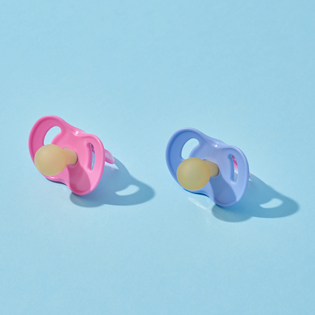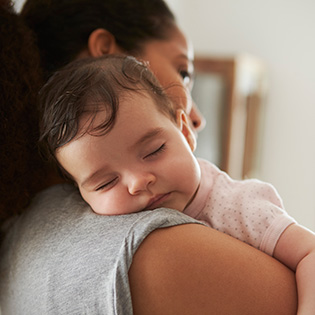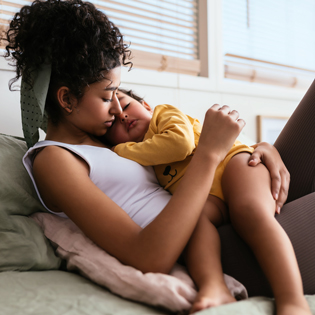Best Walking Toys
What to Expect selects products based on real-life testing conducted by staff, contributors and members our user community, as well as independent research and expert feedback; learn more about our review process. Prices and details are accurate as of the published date. We may earn commissions from shopping links.
One milestone parents most look forward to is their baby’s first steps. As your baby starts to show signs of walking, like pulling themselves or standing with assistance, you may want to consider purchasing a walking toy. Also known as a push toy, walking toys can help refine baby’s balance, increase his spatial awareness and practice the foundation of walking (placing one foot in front of the other). They also allow baby to move around the room without an adult’s aid, giving him the confidence needed to take those first waddles.
You may want to experiment with several types of walking toys to help baby find the one he enjoys most. You’ll also want to keep in mind that every baby is different. Although my daughter enjoyed walking toys and started walking soon after her first birthday, my son was only interested in walking toys for a short time and started walking at ten months! There are many ways to teach baby how to walk, and these types of toys are just one component.
How we chose the best walking toys
Nowadays there are hundreds of walking toys to choose from. Even in the short seven years I have been a mother, the options have exploded, especially as parents look for alternatives to walkers. Luckily, we have sorted through the bunch and found our picks for the best walking toys using the following criteria:
Per guidance from the American Academy of Pediatrics (AAP), we made sure to not include any seated baby walkers, which have been found to pose fall risks and can delay baby’s motor development.
We interviewed Amber Landry, M.D., FAAP, a board certified pediatrician at Texas Children’s Pediatrics to learn more about tips for using a walking toy, including making sure that it is used in addition to other strategies to teach baby how to walk.
We spoke to foure What to Expect staff members who have five children between them and have tested many of the walking toys on this list.
We leaned heavily on the personal experiences of caregivers in the What to Expect community and included walking toys that received overwhelmingly positive reviews for size, ease of storage, and entertainment value . Also, because these types of toys can vary in price, we included a variety of price points to suit different budgets.
Other features to consider in a walking toy
There are several different walking toys to choose from. Here are some factors you may want to consider when deciding which is best for your child:
Interactivity: There are many different types to choose from, including interactive musical and light-up toys that often double as activity centers and can be used even before baby starts to stand. On the other hand, you may want to opt for a simple toy that won’t take up much space and will be quiet, such as a push toy designed only for walking. Check what special features a walking toy has to make sure it meets your expectations.
Versatility: Some walking toys have a “sit to stand” design, meaning they come with an activity board that baby can use as soon as he starts to sit up. These types of walking toys might cost more , but they also encourage baby’s fine motor skills and cognitive development. Others can be used well past baby learns to walk, some transforming into scooters or ride-on toys that they can use over and over again.
Portability: Some push toys can be quite large. Consider how much room you have for storage and whether the toy is portable enough to be tucked away when not in use if you’re working with limited space.
Are walking toys good for baby?
“Walking toys can help babies develop their gross motor skills, build their lower extremity muscles, and improve their depth perception,” says Dr. Landry, adding that all of these things encourage the fundamentals of walking.
She does, however, caution parents to closely monitor their children when using walking toys. You also want to consider how to babyproof your home for a more mobile child, like doubling down on baby gates or clearing any trip hazards
What age do children start walking?
“Most babies will walk around 15 months,” says Dr. Landry. “If they are showing no signs of walking, your pediatrician can help understand if that is due to a genetic cause, prematurity, or another underlying issue. Most importantly, they can work with you to support your baby in becoming mobile.”
Some signs that your baby is on their way to walking include pulling themselves up to stand, standing without assistance and walking with assistance. When they start trying to walk on their own, they’ll also start tottering, which is when baby moves without assistance, but not consistently. They may only be able to take one step forward before falling or reaching for assistance.
Although no two babies are the same (even twins are known to walk at different times), you may want to consult with your baby’s pediatrician if you are concerned with their progress, notice walking is overly laborious for your baby , or your baby is experiencing other ailments that are keeping them from being mobile.
Are walkers safe for babies?
Not all walking toys are created equal. In fact, what most parents refer to as “baby walkers” have been deemed unsafe by the AAP. Walkers place babies in a suspended seat, often circular, with toys around the seat. This allows their feet to touch the ground so they can move about and get the fele for walking. However, many pediatricians warn the enclosed, suspended nature of the walkers may make them particularly susceptible to falling down stairs, porches, and into pools. Moreover, walkers may not help your baby develop the motor skills, decision-making, and repetition needed to help them walk unassisted because they are suspended in a seat.
“Seated walkers can delay walking,” says Dr. Landry. “But walking toys are a safe alternative and help reinforce the skills your baby is developing.” She recommends looking for push or pull walking toys — such as the types mentioned in this article — to support little ones as they learn to walk.
With any type of walking toy you select, however, allow it to be just one of several techniques you expose your baby to as they develop walking. “Walking toys are great, but so is good old fashion, hand-to-hand practice [with a parent],” says Dr. Landry.
Why Trust Us?
What to Expect is the world’s most trusted pregnancy and parenting brand for a reason. Our product recommendations are based on expert parent insight, advice from medical professionals and feedback from the millions of parents and parents-to-be in our community. Our editors adhere to the highest research and reporting standards and our team of vetted OB/GYNs, pediatricians and other health professionals ensure our recommended products are safe and effective for you and your baby.
Best Overall Walking Toy
VTech Sit-To-Stand Learning Walker

- Grows with baby
- removable activity center
- two-speed control
- Not easy to store
The VTech Sit-to-Stand Learning Walker is one of the most popular walking toys on the market today — and it just so happens to be our favorite walking toy because of the range of types of play and learning it offers. Parents love that it’s such a versatile toy, , complete with piano keys, shape sorters, rollers, and light buttons. As your baby starts to explore walking, the four wheels help to create a strong base (or foundation) for your baby to develop their fine motor skills.
“I find it moves easily when my daughter is walking with it,” says Kimberlee Beck, Marketing Manager, Engagement at What to Expect. “My daughter also loves all the activities and sounds, and I like that the activity display can be removed from the walker for sit-down play.”
Many What to Expect community members also cite the detachable activity center as their favorite feature. Like Kimberlee, you remove it for a sit-down toy that allows baby to practice their fine motor skills by pushing buttons, grabbing the phone or spinning spinners. Once baby starts to walk, you can remove the activity center so it won’t be a distraction. Parents find it’s the perfect height and that the handle is easy for little hands to grip.
Another helpful feature: the back wheels lock to slow down the walker (and, also, your baby. Kimberlee says the feature is effective, though she wishes there was a lock that stopped the wheels entirely. walker folded flat for easy storage, but others noted that it’s easy enough to take apart if you want to put it away.
Recommended Ages: 9 months and up
Dimensions: 16.5 x 14.2 x 18.1 inches
Weight: 2.2 pounds
Batteries: 2 AA included
Best Musical Walking Toy
Fisher-Price Laugh & Learn Smart Stages Learn With Puppy Walker

- Grows with baby
- plays music and lights up
- Some said wheels spin too fast
The Fisher-Price Laugh & Learn Walker is the perfect walker if your little one is particularly drawn to sounds and music. It has a highly entertaining (and adorable!) interactive panel that plays different sounds such as the alphabet, bright colors, shapes, numbers and even Spanish words.
“I would have to pry my daughter away from ‘puppy,’” says Leah Rocketto, What to Expect’s Associate Commerce Director. “Before she showed signs of walking, she took full advantage of the activity center’s spinners, sliders and buttons, which were great for helping with her fine motor skills. It’s also a great testament to the toy that I could turn off the volume for my own sanity, and my daughter would continue to play with it.” When baby is ready to practice walking, the easy-grip handle of the walker offers sturdy support which will aid them in building the confidence they need for continued walking. “Puppy” further motivates your child by sharing encouraging phrases and songs, the latter of which Leah says she would wing when her daughter would use other walking toys.
Many parents praised this cute walking toy for helping their little one start walking, but some noted that the volume wasn’t very loud (which might be a pro for parents!) and that the handle could be stronger.
Recommended ages: 6 months and up
Dimensions: 16.2 x 19.31 x 18.19 inches
Weight: 4 pounds
Batteries: 2 AA, not included
Best Wooden Walking Toy
Melissa & Doug Chomp & Clack Alligator Push Toy

- Sturdier than plastic
- can be used on hardwood
- makes sound when pushed
- Not adjustable
From What to Expect-beloved brand Melissa & Doug, the Chomp & Clack Alligator wooden push toy is a great alternative to the typical plastic-wheeled push toys that are sometimes more prone to tipping or not rolling smoothly.
Karen Sly, Finance Manager at What to Expect, got this toy for her daughter after finding that the push toy they previously owned didn’t move easily. “It definitely moved much more easily across the hardwood floor,” she says of the Melissa & Doug walker. “I love that it's made of wood so it feels sturdier and definitely still has a lot of life left in it for my next kid.”
“My child was a late walker, and this toy really encouraged her to stand and push,” says Joyce Slaton, Commerce Editor at What to Expect. “She was a little bit afraid of the alligators' clacking jaws, but she liked being able to make the clicking clacking noises a lot. It rolled really nicely — she would push this one all over her Grandma's garage.”
Although it doesn’t have any of the electronic bells and whistles of other picks on this list, the alligators make inviting clacking sounds when your tot pushes it along. It’ll also help teach cause-and-effect, as pushing the walker causes the sound. A few parents also noted that the wooden bottom extends a little bit farther back and works well to prevent tipping.
It’s also worth mentioning that the wheels have slip-resistant bands to prevent sliding around on wooden floors and provide more resistance on carpeting.
Recommended ages: 1 year and up
Dimensions: 15 x 15 x 11.75 inches
Weight: 6.6 pounds
Batteries: Not required
Most Versatile Walking Toy
Skip Hop Kids 3-in-1 Ride-On Scooter and Wagon Toy

- Turns into ride-on toy
- adjustable handle
- Wheels may scratch hardwood floors
What’s better than one toy? Three toys, of course. Although many of the walkers on this list are designed to grow with baby, the Skip Hop 3-in-1 Ride-On Toy is actually three distinct toys in one. It starts as a push wagon with a bin that’s perfecting for toting toys. Then, as baby becomes more steady with his gross motor skills, the bin can be flipped around to become a seat, serving as a ride-on toy to sit on. Once your little one has mastered walking, he can stand on it to use as a scooter — just don’t forget a helmet.
Many parents felt Skip Hop’s push walker was sturdier than other plastic walkers, through the narrow base does make it tip easily for unsteady children. Although it might scratch hardwood floors, parents found that it works great on carpet.
Recommended ages: 12 months to 5 years
Size: 22.75 x 13.5 x 20.5 inches
Weight: 5.4 pounds
Batteries: 3 AAA, not included
Most Adjustable Walking Toy
Brio Toddler Wobbler

- Has rubber wheels
- adjustable handle and wheels
- durable
- Not interactive
For parents who want to keep it very simple, the Brio Toddler Wobbler is a no-fuss option. Made with solid beechwood, this walker features an adjustable handle and easy-to-use brakes. And unlike most walkers, which use plastic wheels, Brio’s walker has no-scruff rubber wheels that parents say are smooth and sturdy. Parents also appreciate that each wheel is adjustable, so you can modify the tension to make the walker speed up or slow down to match baby’s walking ability. The handle can also be adjusted two ways: Straight to aid with pulling up, or at an angle to assist with walking.
Some parents said that the adjustability of this walker helped their babies feel more confident walking because it supported them at various stages. Although baby won’t be able to use it before that milestone, they’ll enjoy using it after not only for walking, but also for carrying around toys in the wide cart.
Recommended ages: 9 months and up
Dimensions: 19 x 12.75 x 19 inches
Weight: 5 pounds
Batteries: Not needed
Best Walking Toy for Pretend Play
Bright Starts Giggling Gourmet Shop 'n Cook Walker

- Grows with baby
- wide base
- easy to assemble
- Large
The Bright Starts Giggling Gourmet Shop Walker both supports baby as he starts walking on his own while providing a creative way to do so. When baby starts to sit up, he can enjoy the buttons and switches on the removable cooktop to develop fine motor skills. As he starts to stand, you can lock the wheels of the walker so he can use it to pull himself up. Lastly, as he starts to walk, unlock the wheels and let him start practicing being mobile, He can use the cart for pretend play and as a shape sorter when he needs a walking break. You can also make it even more interactive by adding real (non-perishable) food and kitchen items to his cart.
Although some parents found the cart to be quite light and could lead to tip overs, others noted that the extra-wide base helped keep it right side up. Plus, you can choose to lock all or some of the wheels, which can be useful if you want to slow down baby.
Recommended ages: 6 months and up
Dimensions: 22 x 6.9 x 16 inches
Weight: 5.28 pounds
Batteries: 3 AA, included
Best Educational Walking Toy
VTech Sit-to-Stand Ultimate Alphabet Train

- Grows with baby
- turns into ride-on toy
- includes 10 activities
- Large
This VTech walking toy lives up to its “ultimate” name by offering ten different play activities that include tons of educational opportunities, from learning about shapes and colors to discovering cause and effect.
“When I first saw all the literal bells and whistles on the train, I thought ‘this toy is going to be my worst nightmare,’” says Leah, whose daughter was given this toy as a gift. “I’m happy to say I’ve been proven wrong. My daughter will happily play with the train for a long time, because of all the features. In the beginning, she mostly pressed the buttons and flipped the pages. But as she’s developed she’s found other features to enjoy. Right now, she enjoys pushing the train through the living room and dropping the letter blocks down the chute.”
Like Leah, parents love the versatility of VTech’s push toy, saying it’s a toy that’s provided their children years of play. They also love that the train plays music and sound when in motion, further encouraging kids to walk.
Of course, if you’re in need of quiet time, you can easily turn the sound off with a switch that, according to Leah, is easy enough for parents — but not kids — to use.
Recommended ages: 1 year and up
Dimensions: 31 x 10 x 17 inches
Weight: 7.28 pounds
Batteries: 3 AA, included
WhatToExpect.com, When Do Babies Start Walking?, August 2021.
American Academy of Pediatrics, Movement: Babies 8 to 12 Months, April 2021.
 Trending On What to Expect
Trending On What to Expect














































